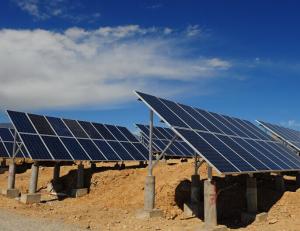Solar Inverter 5000w
Solar Inverter 5000w Related Searches
Best Solar Pv Inverter 5000w Solar Power Inverter Solar Pv Inverter On Maui Grid Connected Solar Inverter Grid Assisted Solar Inverter Solar Grid Inverter Aeg Pv 2800 Solar Inverter Pv Solar Inverter Solar Pv Inverter Solar Inverter 5000wHot Searches
Type Of Inverter For Solar Used Solar Inverter For Sale Inverter Size For Solar System Solar Edge Inverter For Sale 5kw Solar Inverter For Sale Solar Inverter For Sale Solar Inverter For Battery Solar Inverter For Split Ac Solar Inverter For Laptop Solar Inverter For Fridge Solar With Inverter Price Solar Inverter With 2 Battery Solar Inverter Price In China Best Solar Inverter In China Solar Inverter Price In Dubai Solar Inverter Price In Uae Solar Inverter Price In Kenya Solar Inverter Price In Kerala Solar Inverter Price In Ghana Inverter Size For Solar SystemSolar Inverter 5000w Supplier & Manufacturer from China
Okorder.com is a professional Solar Inverter 5000w supplier & manufacturer, offers integrated one-stop services including real-time quoting and online cargo tracking. We are funded by CNBM Group, a Fortune 500 enterprise and the largest Solar Inverter 5000w firm in China.Hot Products
FAQ
- During fault conditions, a solar inverter typically handles voltage regulation through various protective and control mechanisms. It may employ techniques such as voltage regulation algorithms, fast response times, and fault detection systems. These measures help the inverter to rapidly detect and respond to fault conditions by adjusting its output voltage to maintain stability within safe limits. Additionally, some inverters may also incorporate features like overvoltage protection, under-voltage protection, and anti-islanding functionality to further ensure safe and reliable operation during fault conditions.
- Yes, a solar inverter can be controlled remotely. Many modern solar inverters come equipped with built-in communication capabilities, such as Wi-Fi or Ethernet connectivity, allowing for remote monitoring and control. Through a web-based interface or dedicated mobile app, users can access and manage their solar inverters from anywhere with an internet connection. Remote control features typically include monitoring the system's performance, adjusting settings, and troubleshooting issues. This remote control functionality offers convenience and flexibility for solar system owners, enabling them to optimize energy production and manage their system efficiently.
- When installing a solar inverter, there are several important safety measures to consider. Firstly, it is crucial to turn off the main electrical supply before beginning any installation work. This will prevent the risk of electric shock or injury. Additionally, it is important to wear appropriate personal protective equipment (PPE) such as gloves, safety glasses, and non-slip footwear to ensure personal safety during the installation process. Another safety measure is to ensure proper grounding of the solar inverter system to prevent electrical faults and potential fire hazards. Furthermore, it is essential to follow the manufacturer's instructions and guidelines for installation to ensure proper wiring and avoid any potential electrical hazards. Regular maintenance and inspections should also be conducted to identify and address any potential safety issues or malfunctions. Overall, prioritizing safety measures during the installation of a solar inverter is crucial to minimize risks and ensure the safe and efficient operation of the system.
- A solar inverter ensures safety during maintenance by incorporating various safety features such as automatic shut-off mechanisms, grounding protection, and isolation of high-voltage components. Additionally, it may have user-friendly interfaces and clear warning labels to guide technicians while working on the equipment. These measures help prevent electrical hazards and ensure the safety of maintenance personnel.
- To connect a solar inverter to the electrical grid, you need to follow a few steps. Firstly, you need to ensure that your solar inverter is compatible with grid connection. Then, you'll need to install an AC disconnect switch and connect it to your main electrical panel. Next, connect the solar inverter output to the AC disconnect switch using appropriate wiring. Finally, hire a licensed electrician to inspect and connect the inverter to the utility meter or main electrical service panel, ensuring compliance with local regulations and safety standards.
- Photovoltaic grid-connected inverter without DC emc how will happen
- can convert light energy into electricity, so that the current flow from one side to the other, the general can be issued equivalent to 10 to 20% of the received light energy. In general, the stronger the light, the more electricity is generated. Its working principle is based on the semiconductor PN junction of the photovoltaic effect. The so-called photodynamic effect is when the object by the light, the object within the charge distribution of the state of the electromotive force and current generated an effect.
- A solar inverter is connected to the solar panels through a direct electrical connection. The DC (direct current) electricity generated by the solar panels is fed into the inverter, which then converts it into AC (alternating current) electricity suitable for use in homes and businesses.
- The role of power factor correction in a solar inverter is to improve the efficiency and performance of the inverter by correcting and optimizing the power factor of the electrical system. By adjusting the phase relationship between voltage and current, power factor correction ensures that the inverter draws and supplies power more effectively, reducing energy losses, improving power quality, and minimizing harmonics in the system. This helps to maximize the overall power output and reliability of the solar inverter, leading to better energy conversion and utilization.















































